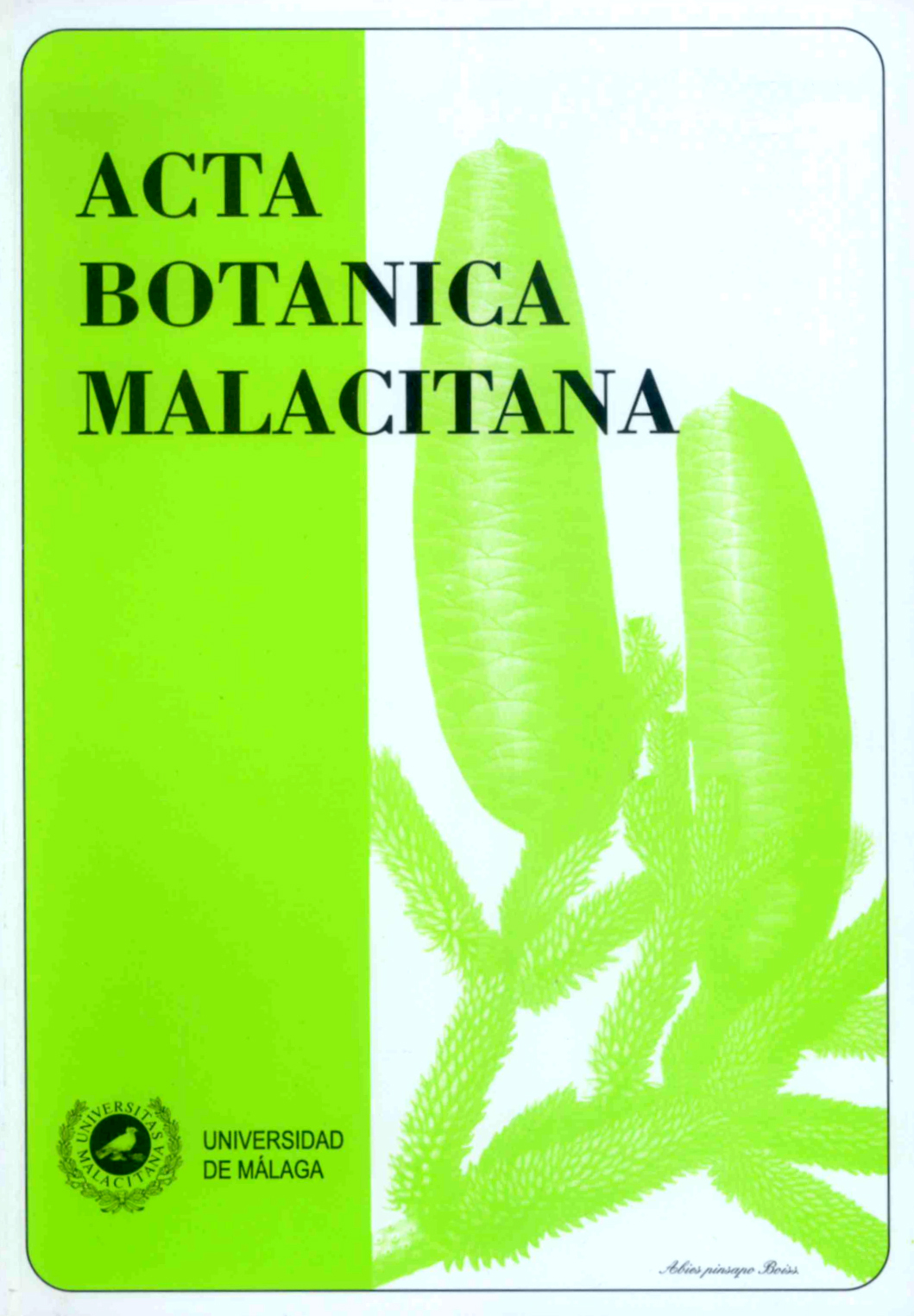Sobre la clasificación del complejo Carthamus-Carduncellus (Asteraceae, Cardueae-Centaureinae) y su tratamiento en Flora Iberica. On the classification of Carthamus-Carduncellus Complex (Asteraceae, Cardueaecentaureinae) and its treatment in Flora Iberica
DOI:
https://doi.org/10.24310/abm.v37i0.2669Abstract
Español. Después de analizar las alternativas de clasificación del complejo Carthamus-Carduncellus que son compatibles con los resultados de los análisis moleculares, se propone volver a la clasificación en dos géneros de Hanelt (1963) modificada por la inclusión de Carthamus sect. Thamnacanthus (DC.) Hanelt en Carduncellus Adans.; se incluye Femeniasia Susanna, no estudiada por Hanelt, en Carduncellus. Se hacen las nuevas combinaciones Carduncellus rhiphaeus (Font Quer & Pau) G. López, Carduncellus balearicus (J. J. Rodr.) G. López, Carduncellus sect. Thamnacanthus (DC.) G. López y C. hispanicus subsp. intercedens (Degen & Hervier) G. López. Se describe la nueva serie Carduncellus ser. Fruticosi G. López, y las variedades C. monspelliensium var. almeriensis G. López & var. valentinus G. López. Carthamus L., tal como aquí se delimita, esta formado únicamente por plantas anuales que tienen las cipselas externas epaposas (muy raramente con vilano), y el resto con un vilano persistente formado por cerdas anchas, paleáceas, linear-lanceoladas o espatuladas. Carduncellus Adans., por plantas perennes, herbáceas o leñosas en las que todas las cipselas tienen vilano (muy raramente pueden ser epaposas), siendo el vilano persistente o frecuentemente caduco, formado por cerdas estrechamente lineares. Carthamus es del Mediterráneo oriental y O. de Asia , y Carduncellus Adans. está centrado biogeográficamente en el Mediterráneo occidental.
English. Different alternative classifications congruent with the molecular analyses of the complex Carthamus-Carduncellus are discussed. It is proposed to return to the traditional Hanel (1963) classification, but with Carthamus sect. Thamnacanthus (DC.) Hanelt included in Carduncellus Adans.; the genus Femeniasia Susanna, not studied by Hanelt, is also included in Carduncellus. The new combinations Carduncellus rhiphaeus (Font Quer & Pau) G. López, Carduncellus balearicus (J. J. Rodr.) G. López, Carduncellus sect. Thamnacanthus (DC.) G. López and C. hispanicus subsp. intercedens (Degen & Hervier) G. López are proposed. The new serie Carduncellusser. Fruticosi G. López, and the varieties C. monspelliensium var. almeriensis G. López & var. valentinus G. López are described. Carthamus L., as delimited here, include only annual plants having outer cypselas without pappus (rarely all epappose) and the rest with a persistent pappus of wide, paleaceous, linear-lanceolate o spatulate bristles. Carduncellus Adans., on the other hand, include perennial herbaceous or woody plants having all the cypselas with pappus (very rarely epappose), the pappus, persistent or deciduous, of narrow linear bristles. Carthamus L. is of East Mediterranean and West Asia origin, and Carduncellus Adans. has its center in the western Mediterranean region.
Downloads
Metrics
Downloads
Published
How to Cite
Issue
Section
License
All information related to the licensing of published works in Acta Botanica Malacitana and copyright can be found in our Editorial Policy.







1.png)
